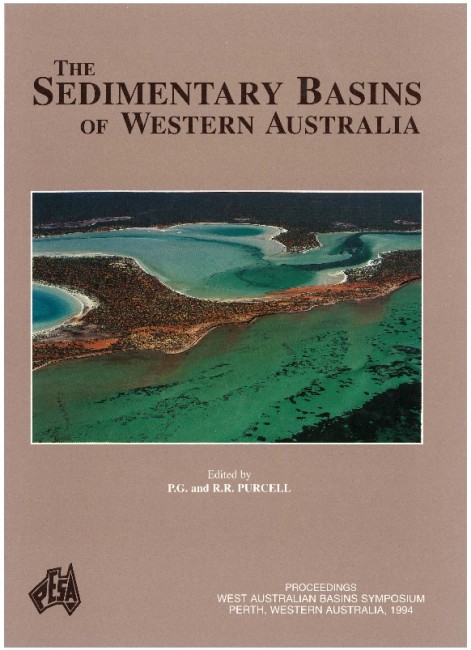Publication Name: The Sedimentary Basins of WA
Authors: John D. Gorter, Robert S. Nicoll and Clinton B. Foster
Publication Volume: 1
Date Published: July 1994
Number of Pages: 35
Reference Type: Book Section
Abstract:
Lower Palaeozoic sediments in the Carnarvon Basin of Western Australia have potential for commercial petroleum accumulations. Resampling of cores from exploration wells in the southeastern Carnarvon Basin for conodonts and palynomorphs has resulted in a reappraisal of the ages and stratigraphic nomenclature of the sediments. Conodonts found in five wells provide a means to correlate the Silurian and Cambro-Ordovician facies architecture with published sea level curves. Using these eustatic curves and sequence stratigraphy it may be possible to predict the localisation of petroleum source rocks and stratigraphically controlled reservoirs. While Cambro-Ordovician and Silurian sediments elsewhere in the world are proven hydrocarbon source rocks, no source facies are yet known from rocks of this age in the Carnarvon Basin, although shows of oil and gas hint at their presence. Lower Palaeozoic sandstones and carbonates in the basin are capable offorming good hydrocarbon reservoirs in both structural and stratigraphic traps.New formation names are proposed: the Tumblagooda Sandstone is raised to the Tumblagooda Group (?Late
Cambrian to Early Ordovician) and subdivided into four unnamed units; the Dirk Hartog Formation is raised to
Group status to comprise the Ajana Formation, Yaringa Evaporite, and Hamelin Formation (?Late Ordovician to Late Silurian). The Faure Formation is introduced to replace the uppermost Dirk Hartog Formation to lower Kopke Sandstone and the Kopke Sandstone and Sweeney Mia Formation are also redefined and classified as undifferentiated Devonian. All these rock units were previously included in the Kalbarri Group. This name is abandoned because of the diverse ages of the component members, and it serves little purpose for detailed basin studies.


